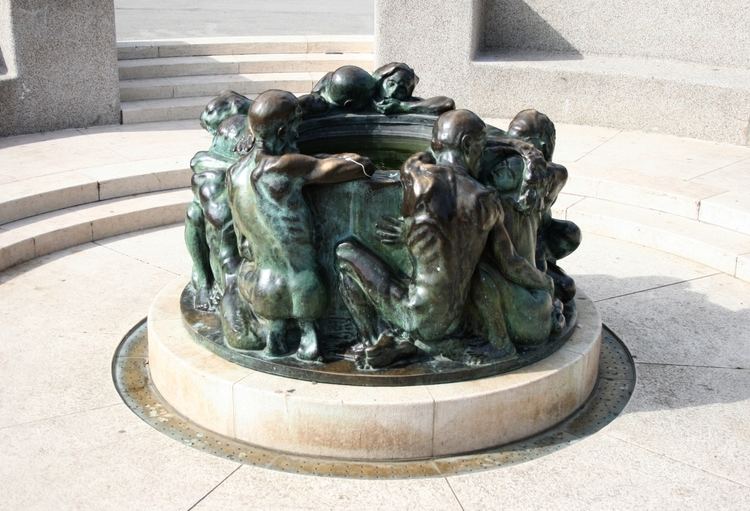Artist Ivan Meštrović Year 1905 | Dimensions 125 cm (49 in) | |
 | ||
Address Trg maršala Tita, 10000, Zagreb, Croatia Hours Open today · Open 24 hoursMondayOpen 24 hoursTuesdayOpen 24 hoursWednesdayOpen 24 hoursThursdayOpen 24 hoursFridayOpen 24 hoursSaturdayOpen 24 hoursSunday(Easter Sunday)Open 24 hoursHours might differSuggest an edit Similar St Catherine's Church - Z, Ivan Meštrović Gallery, Lotrščak Tower, Tortureum ‑ Museum of Torture, Stone Gate | ||
The Well of Life (sometimes also At the Well of Life or the Fountain of Life; Croatian: Zdenac života) is a sculpture by the Croatian sculptor and architect Ivan Meštrović installed in front of the Croatian National Theatre on Marshal Tito Square in Zagreb, Croatia. It depicts figures that crouch and twist their bodies around a well which symbolizes life, youth, and the source of eternal beauty.
Contents
Description
The sculpture is circular with relief of ten naked figures, a child, love couple and the old man, in natural size that crouch and twist their bodies around a well which contains water. Strong facial expressions of the figures show the joy of life which alternated rhythmically makes life cycle. Figures are watching their reflections in the water, while their bodies appear to have been frozen in motion. Figures are arranged so that they would show to viewer the purpose of the well, desire for life and joy, which can be seen best in young characters that are hugging and kissing, which are opposed to the old man who is at the end of his life, and looks with grief into the well, a symbol of life. Sculpture depicts man's natural cycle, from birth to death.
The surface of sculpture is smooth and rounded with no sharp edges or regular solids. Sculpture is made of bronze, whose dark color is in great contrast to the whiteness of bedrock on which sculpture is placed. The transitions between light and shadow are mild. Sculpture is both convex and concave.
Auguste Rodin's influence on Meštrović can be seen on this scultpure. As art historian professor Ljiljana Čerina says: "With its shimmering surface treatment of the body, Meštrović brings original Rodin's impressionism into the Vienna Secession which proves that he is rodinist among secessionists, while he later in Paris proves that he is secessionist among rodinists."
Exhibition
Sculpture was made in 1905, and was exhibited in 1909 in the author's gallery in Ilica street no. 12. In year 1912, sculpture was bought by Izidor Kršnjavi and installed on the Marshal Tito Square. It was placed in the cavity surrounded by walls so that naked bodies on it would not cause astonishment and critical comments of, at the time, conservative people of Zagreb. In correspondence with Ante Trumbić, Meštrović clearly expressed his wish that Well of Life should be placed in Split.
